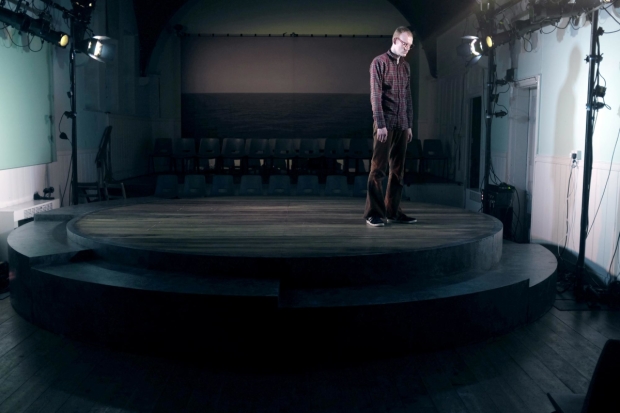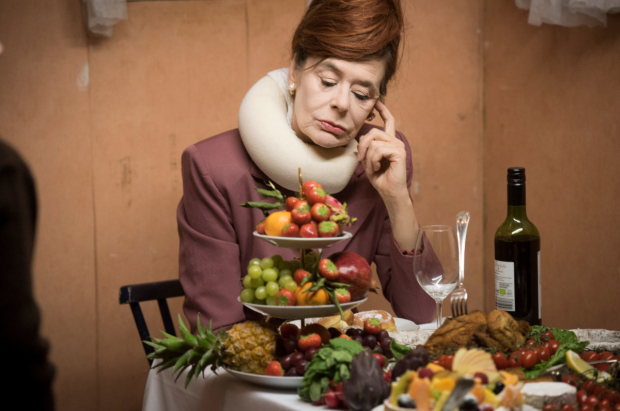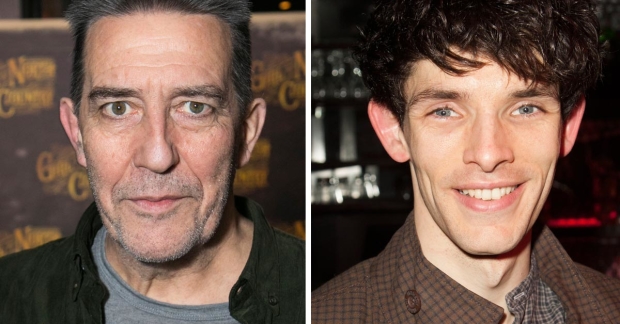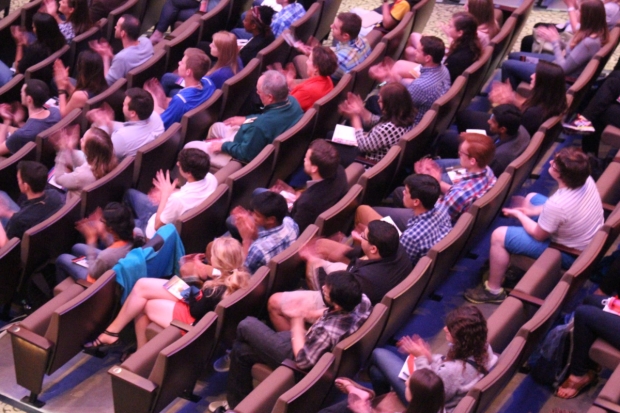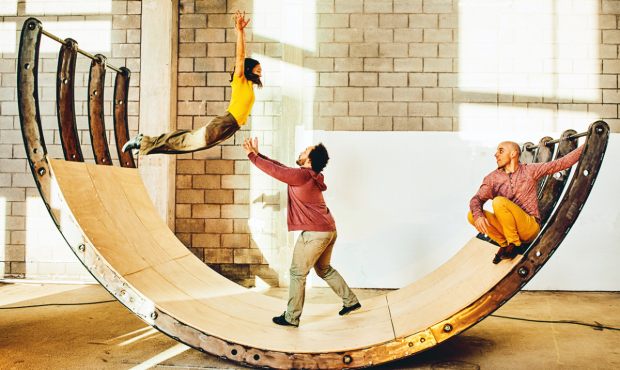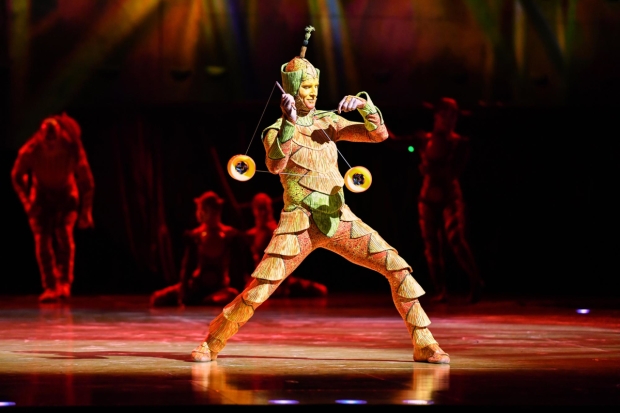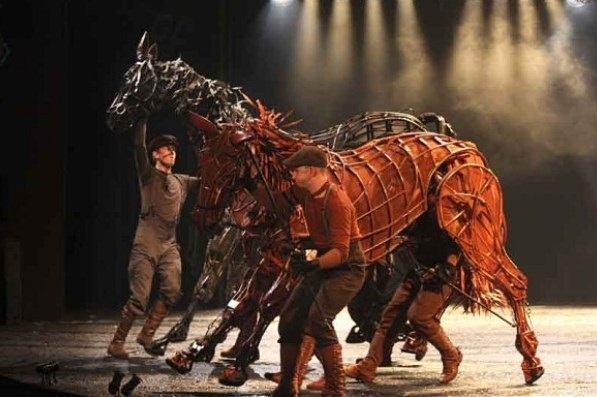Demonic anglepoise lamps: how to create a dystopia using light
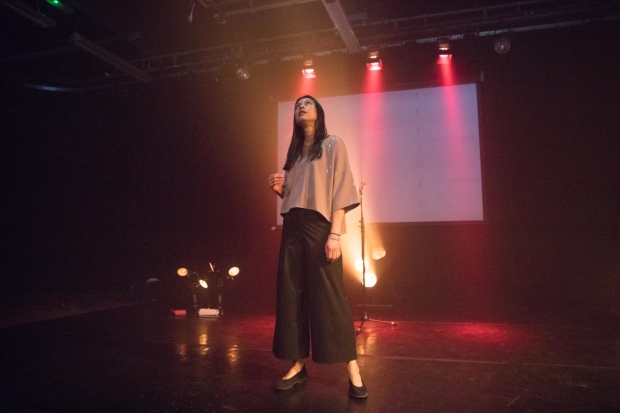
© Claire Haigh
The world of Francesca Beard’s How to Survive a Post-Truth Apocalypse is a surreal one. When I was first approached by the director Rob Watt it became clear that this piece – more than ever – was going to be one of huge collaboration. We travel through dystopian worlds, play Who’s Lie Is It Anyway? and regularly encounter demons. The innovative script and countless scene changes raised several questions. How do we define these fantastical spaces and how do all these characters manifest in a one-woman show?
Having read, annotated and re-read the script, I couldn’t shake this idea that the demons should become light rather than taking human form. I explored lots of options; from bare light bulbs overhead, which were too sterile, to dedicated theatrical 'demon' lanterns in the rig, which were too detached. What was becoming evident was that they needed to be tactile. They needed to share the space with Francesca but not steal any of the spotlight – ironic. They needed to be… anglepoise lamps.
These lights weren’t just a design tool – they were a second character!
We were lucky enough to have week-long research and development on Post Truth at the Half Moon Theatre in Limehouse and on the first day, as we started working through the show, I put my idea forward to the group. It was explored. The venue were kind enough to lend us some of their desk lamps, and I started plotting into the desk some very basic 'talking'… FLASH, dim, FLASH FLASH, dim, dim, FLASH. It’s amazing how quickly you believe the anglepoise are actually the ones speaking. It went well. We ordered nine more lamps…
Rob and I began to think of the spaces differently – in terms of lighting – and the anglepoise became far more than just talking monsters. We began wondering what sort of 'twinkle' the Mirrored Lake would have? Whether they could also pass as stars in the Forest of Desire? Could they be underwater ripples in The Thinnest Air? YES. Yes, to all of them. We were storytelling at its rawest form. These lights weren’t just a design tool – they were a second character!
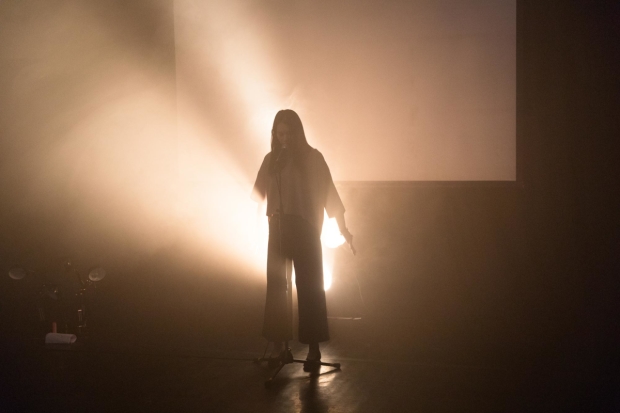
© Claire Haigh
Asides from the anglepoise, what was important was punctuating the scenes. We used strobe lights. No, I didn’t just blast the audience in the face until they realised the scene was new… What we did, at the top and tail of each world, was the briefest pulse – a lighting full stop if you will. It really worked and only heightened everything else on the stage and in sound.
All of the above had to tour in the smallest package possible – thank goodness for the anglepoise doing most of the work – therefore the rest of the design was sparse. We had key light for faces, and a boom of Par Cans (a type of stage lights) up stage centre for the epic opening. Those, plus a couple of Fresnels (lenses) for very specific moments make up the touring rig.
Along with the excellent sound design from Jethro Cooke and video design from Shawn Soh, we have created unbelievably clear worlds using so very little. It’s always said that collaboration is the key to great theatre. This piece proves it.
How To Survive A Post-Truth Apocalypse runs throughout the UK until 6 June 2018.



